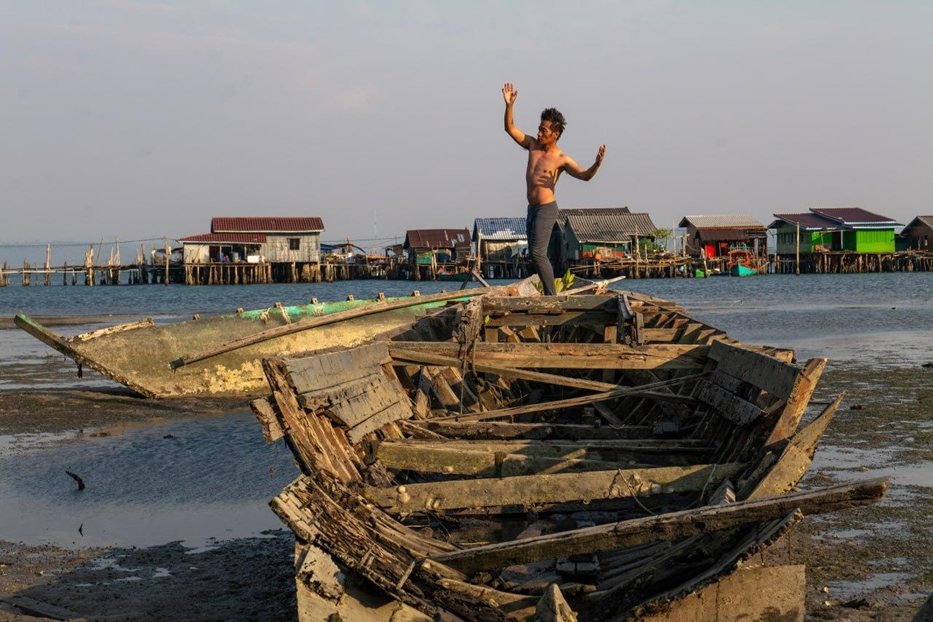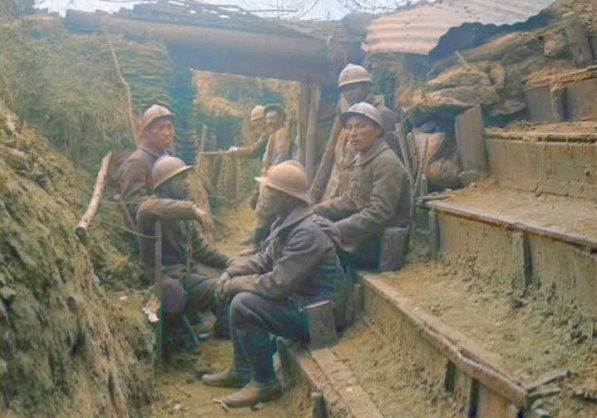The History of Cambodian Archaeology: Between Discovery, Colonialism and Renaissance
- Editorial team

- Sep 16
- 4 min read
Cambodia, the cradle of one of South-East Asia's most fascinating civilisations, is now world-renowned for its exceptional archaeological heritage, particularly the site of Angkor Wat, a powerful symbol of Khmer identity. However, this archaeological wealth, the fruit of a long history, has been shaped by centuries of research, exploration and challenges, particularly marked by the colonial period and the political turmoil of the 20th century.

The First Discoveries and Colonial Explorations
In the mid-19th century, as the Indochinese peninsula became the focus of French commercial and military interests, a number of landmark expeditions marked the beginning of European recognition of Cambodia's heritage. In 1860, Henri Mouhot, a French explorer and naturalist, discovered the ruins of Angkor Wat, sparking an infatuation that would fuel a romantic and often erroneous vision of Khmer civilisation. His account, published post-mortem in Europe, popularised these mysterious ruins, instilling a powerful imagination in the Western mind. At the same time, other expeditions, such as that of the Mekong Exploration Commission in 1866, led by Francis Garnier, produced surveys, copies of ancient inscriptions and samples of works of art for French museums.
The institutionalisation of archaeology: the École Française d'Extrême Orient
At the end of the 19th century, archaeology in Cambodia underwent a major formalisation with the creation in 1898 of a permanent archaeological mission in Indochina, attached to the Académie des Inscriptions et Belles-Lettres, then renamed the École Française d'Extrême Orient (EFEO). Under the direction of pioneers such as Louis Finot, who combined linguistic erudition with archaeological passion, the EFEO became the main structure dedicated to the conservation, survey and restoration of Khmer and Cham monuments. Its teams combined epigraphic studies, architectural and iconographic analyses and systematic excavations. In particular, they developed the technique of anastylosis (restoration by reassembling stones), imported from Java. With the signing of a treaty with Thailand in 1907, management of Angkor was finally officially resumed, giving rise to sustained conservation efforts.
Prehistoric research and initial results
Alongside the study of historical civilisations, prehistoric archaeology gradually came to the fore in the first half of the 20th century. Attention focused on emblematic sites such as Samrong Sen, where the work of Henri Mansuy revealed and documented an ancient civilisation at the transition between prehistory and the early Bronze Age. Other major researchers such as Madeleine Colani are devoting themselves to the caves and rock shelters of Indochina, in particular establishing the Hoabinhian culture, a characteristic Mesolithic tradition. These excavations are contributing to a better understanding of the settlement processes and cultural dynamics that preceded the Angkorian apogee.
Angkorian archaeology and its colonial heyday
Most colonial and post-colonial research has focused on the splendours of the Khmer Empire, at the heart of Angkor Archaeological Park. The EFEO devoted many years to the mapping, epigraphic study, dating and restoration of the temples. Figures such as Georges Coedès, Victor Goloubew and Bernard-Philippe Groslier play a key role in understanding Angkor's complex hydraulic network, the social and political organisation of the empire, and the probable reasons for its decline. Pioneering aerial studies shed light on the vast road networks and territorial boundaries at the height of the empire, particularly during the reign of Jayavarman VII.
The Difficulties of the Troubled Years: War and the Khmer Rouge Regime
With the outbreak of the Cambodian civil war in 1970, archaeology came to an abrupt halt. The Khmer Rouge regime (1975-1978) caused the tragic disappearance of trained Cambodian archaeologists, assassinated or exiled most of the specialists, and closed down the institutions. Although Angkor was spared destruction because of the symbolic value it held for the regime, the years that followed saw a total abandonment of the archaeological heritage. The international antiquities market was fed clandestinely by the looting of the sites. This sombre episode marked a major turning point in the history of local and regional archaeology.
The Renaissance and New Perspectives since 1989
Following the Vietnamese withdrawal and the fall of the Khmer Rouge regime, the late 1980s saw the beginning of a slow archaeological renaissance. International collaboration resumed, with the active participation of the Cambodian Ministry of Culture and Fine Arts and educational institutions such as the Royal University of Fine Arts. Joint projects involve German, Japanese, American and other academics. The intensive use of modern technologies, particularly remote sensing and satellite imagery, is revolutionising research by revealing many previously unknown urban structures and sites. These observations are helping to revise certain old models, such as the hydraulic model proposed by Groslier.
Management and conservation of contemporary archaeological heritage
To ensure the long-term protection of the sites, bodies such as the Authority for the Protection of the Site and the Development of the Angkor Region (APSARA), created in 1995, have become guarantors of the integrated management of the risks associated with tourism, town planning and the environment. In addition, UNESCO and its international partners (notably the Japanese JSA Fund) are financing and supervising major conservation projects at Angkor Wat, Angkor Thom and other major sites. This dynamic is accompanied by a strong commitment to training young Cambodian archaeologists, ensuring that research is passed on and pursued from an indigenous perspective.
Cambodian archaeology, with its long tradition of spectacular discoveries, colonial stakes and tragic challenges, is now undergoing a promising revival. The combination of international efforts and renewed local research is opening up new avenues for understanding the origins and history of a major civilisation. The heritage of Angkor Wat and other archaeological sites is no longer limited to a glorious frozen past, but is part of a living dynamic of discovery, preservation and cultural identity.







Just grabbed the real money pokies app for android and wow — slides in seamlessly, spins feel smoother than I expected, and bonus rounds definitely hit more often than in other apps I’ve tried. The UI is clear and clean, no clutter. If you want pokies on Android that actually perform, this one’s a standout.